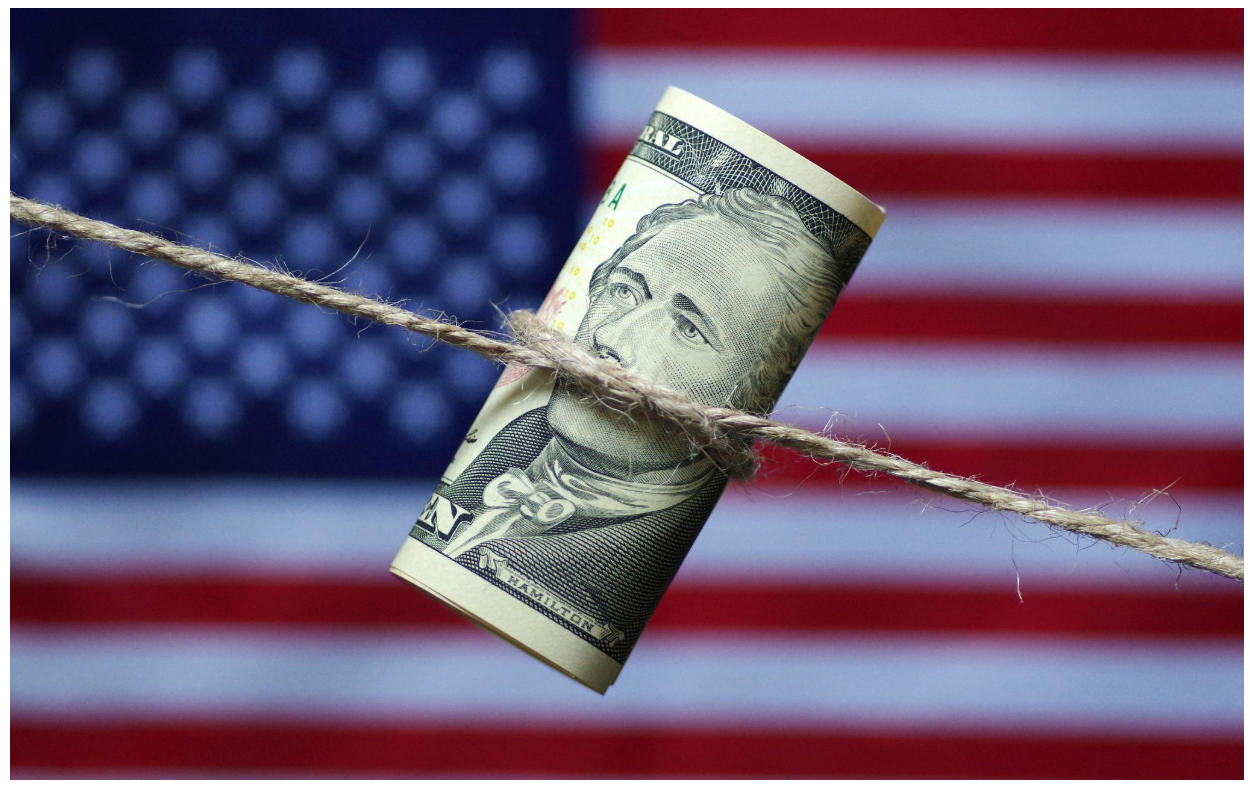
Wall Street analysts are beginning to have deep doubts about the prospects for monetary policy in the United States due to the larger-than-expected US employment data for December 2024. Among them, Bank of America, Citigroup and Goldman Sachs Group Inc. have all lowered their forecasts for further interest rate cuts by the Federal Reserve. Among them, Bank of America even believes that there will be no more interest rate cuts, and said that the next move may be to raise interest rates.
At a critical moment, the latest statements from Fed officials have also attracted attention. Shortly after the release of the non-farm payrolls data, Chicago Fed President Goolsbee said that the latest jobs report showed that the labor market was stabilizing at full employment and was not a sign that the economy was overheating. He believes that as long as inflation does not rise, interest rates will have "some degree of decline" over the next 12 to 18 months.
0 1
Variables triggered by the non-farm payrolls report
The latest data showed that the number of non-farm payrolls in the United States in December 2024 significantly exceeded expectations, with 256,000 new jobs, the highest level since March, and the unemployment rate unexpectedly fell to 4.1%. This strong job performance prompted major Wall Street financial institutions to downgrade their expectations for further rate cuts by the Federal Reserve.
Bank of America: Previously expected two rate cuts of 25 basis points each this year, but now sees no more rate cuts, and points out that the next step could be a rate hike. Aditya, an economist at the bank "After a very strong December jobs report, we believe the rate cut cycle is over," Bhave's team said. If inflation exceeds 3% and inflation expectations rise, the discussion should turn to interest rate hikes. ”
Citigroup: Although five rate cuts of 25 basis points each are still expected, the start of the rate cut has been postponed from January to May. by Andrew Hollenhorst and Veronica Clark's team of Citi economists said that while employment performed better than expected, price and wage inflation were cooling, which should reassure Fed officials about cutting interest rates while the economy remains strong.
Goldman Sachs: The number of interest rate cuts this year has been adjusted from three to two, which is expected to take place in June and December. Jan, chief economist at Goldman Sachs The team led by Hatzius pointed out that they still expect the terminal rate range to be 3.5%~3.75% and predict another rate cut in June 2026.
Rick, CEO of BlackRock Global Fixed Income Rieder believes that unless there is a sharp change in economic fundamentals, the Fed will remain "frozen" for the rest of the year, and the probability of a rate cut in March is extremely low.
In the face of strong employment data, market expectations for the direction of the Fed's monetary policy have changed significantly. While some institutions such as Citigroup remain more optimistic that the Fed may start cutting interest rates later in the year, overall, most analysts believe that the likelihood of a rate cut in the near term is much lower. Especially given the performance of inflation indicators such as the core personal consumption expenditures (PCE) price index, future adjustments in monetary policy will be more dependent on the specific direction of economic data.
0 2
The latest statements from Fed officials
Goolsbee: The labor market is stable, and inflation is under control and interest rates are expected to fall
Chicago Fed President Austan Goolsbee) said shortly after the release of the non-farm payrolls data that the latest jobs report showed that the labor market was stabilizing towards full employment and showed no signs of overheating. "It's a strong jobs report that shows that the job market is stabilizing near full employment, and that's reassuring," he stressed in an interview with CNBC on Friday. ”
Goolsbee sticks to his view that as long as inflation does not go higher, interest rates will fall "somewhat" over the next 12 to 18 months. He explained that if the situation remains stable, inflation remains around 2%, and the job market remains stable and sufficient, then interest rates should gradually fall to neutral levels.
Goolsbee also noted that progress has been made in curbing inflation in recent months, with year-on-year figures looking higher mainly due to rising price pressures in early 2024.
Moussalim: Be cautious about cutting interest rates and pay attention to inflation risks
Meanwhile, St. Louis Fed President Alberto Musalim (Alberto Musalem) expressed a more cautious attitude in an interview with the media. As one of the new voting members of the Federal Open Market Committee (FOMC) in 2025, Mousalim supports a more gradual reduction in the bank rate. He called the Fed's decision to cut rates last month a "thrilling decision" because the current economic outlook is different from when it started cutting rates four months ago.
As of the last meeting, the risk of inflation remaining between 2.5% and 3% has increased, Mousalem added. Therefore, more caution should be exercised when cutting interest rates further. Regarding the impact of future tariff policy, he said: "We will wait and see, the specific measures, how they are implemented, the size, the duration and the interaction with other countries will affect the economy and inflation." ”
The hawkish stance of the new voting members
It is worth noting that Musalem, a new voting member of the FOMC, appears to be more "hawkish" in his rhetoric than his colleagues. As early as December 2024, he expressed concern about the "last mile" of the Fed's fight against inflation, arguing that it would be appropriate to slow down the pace of interest rate cuts in 2025, noting that it is unlikely that interest rates will return to the near-zero level between the financial crisis and the pandemic in the short term.
0 3
The Fed shifted to a "market-based" inflation gauge to provide a new basis for cutting interest rates
The latest reports show that a number of senior officials, including Federal Reserve Chairman Jerome Powell, are increasingly focusing on a relatively little-known price gauge – market-based inflation inflation) as a reason to remain confident in the outlook for US inflation. This shift reflects the Fed's new perspective when assessing the health of the economy.
Exclude services that are difficult to measure directly
Market-based inflation indicators exclude multiple items that government statisticians must estimate, such as portfolio management and advisory services, insurance, etc., because the real prices of these services are difficult to observe and quantify. In addition, the indicator ignores categories such as gambling, pro bono financial services, life insurance, medical and hospitalization services, motor vehicle and other transportation insurance, and net outbound travel. The actual cost of these items is not easily measured directly and is therefore excluded for a clearer picture of inflation.
The difference between a market-based inflation measure and a core inflation measure
While the core inflation measure accelerated to 2.8% in November, the market-based inflation measure has been stable at around 2.4% since May last year. This distinction is particularly important against the backdrop of investors' pessimistic expectations for the Fed's rate cuts in 2025. Bloomberg analysis believes that although Fed officials have stressed that they need to see more progress on inflation closer to the 2% target before lowering interest rates again, they frequently mention this alternative indicator, and the indicator is closer to the Fed's target level, which may suggest that the threshold for further rate cuts is actually lower.
Director Waller's views and support
This week, Fed Governor Christopher Waller made the case for focusing on market-based inflation indicators in his speech and expressed support for further rate cuts this year. He argues that inflation in 2024 is largely driven by estimated price increases, such as housing services and non-market services, which are estimated rather than directly observed, and therefore less reliable in guiding the balance between supply and demand for all goods and services in the economy. Waller expects inflation to continue to cool, which provides a case for him to support further rate cuts.
The position of Powell and other officials
Powell also mentioned in a previous press conference that items such as "non-market services" are a factor in the recent rise in inflation. Federal Reserve Governor Adriana Coogler Kugler made a similar statement in a recent interview, acknowledging the impact of these hard-to-measure service prices on inflation.
Economists' perceptions
Anna Wong, chief U.S. economist at Bloomberg Wong said the rationale for abandoning inferential projects is that they don't actually have forward-looking forecasting signals to indicate the future direction of inflation. She noted that while certain types of inflation, such as rising insurance costs, are real from a personal perspective, from the Fed's perspective, these fluctuations may be scrutinized to ensure policy decisions are not misled.





